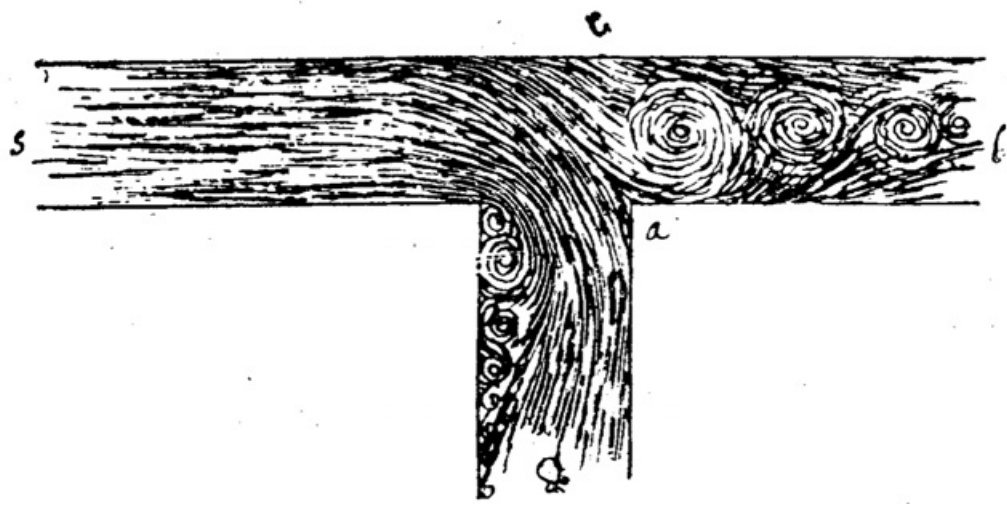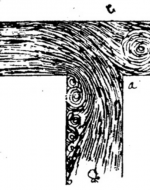Created by Evan Shreiner on Tue, 02/11/2020 - 04:02
Description:
Del moto e misura dell’acqua is a large collection of Leonardo’s writings and sketches related to the motion and measurement of water. Within the collection, Leonardo looks at everything from useful applications of fluid properties to relative fluid densities. However, the main focus of his work is on fluids in motion, the field now known as fluid mechanics. da Vinci was very interested in the ways that water moved through a pipe, and as a result, sketched many variations of pipe flow systems. In this drawing from Del moto e misura dell’acqua, da Vinci models turbulent and laminar flow through a pipe, hundreds of years before the concepts were defined (West).
The sketch depicts water flowing through a pipe from the left to the right until it meets a branch in the path. At this point, a portion of the stream is pushed downward due to gravity, while the rest of the stream is pushed across the gap. While these properties might seem self-explanatory, they depict many revolutionary concepts. Sir Isaac Newton was responsible for the discovery and description of gravity in the 1600s (Smith). While da Vinci doesn’t make explicit mention of it, he is clearly aware that a force is acting to push a portion of water towards the ground, while a separate force is pushing the remainder of the water across the gap.
The most obvious parts of Leonardo’s image are the swirls, which represent the turbulence due to the stream separation. However, additional important detail is the manner in which the image is shaded. Da Vinci adds parallel lines through the fluid to express the layers of parallel fluid moving in the same direction. Laminar flow, the concept that fluid flows in specific lamina, or layers, is an integral part of fluid mechanics that da Vinci clearly illustrates.
Citations:
Smith, George. “Isaac Newton.” Stanford Encyclopedia of Philosophy, Stanford University, 19 Dec. 2007, plato.stanford.edu/entries/newton/.
West, John B. “Leonardo Da Vinci: Engineer, Bioengineer, Anatomist, and Artist.” The American Journal of Physiology - Lung Cellular and Molecular Physiology, vol. 312, 27 Jan. 2017, doi:10.1152/ajplung.00378.2016.
Image:
Smith, George. “Isaac Newton.” Stanford Encyclopedia of Philosophy, Stanford University, 19 Dec. 2007, plato.stanford.edu/entries/newton/.
Copyright:
Associated Place(s)
Timeline of Events Associated with Del moto e misura dell’acqua sketch
Part of Group:
Featured in Exhibit:
Artist:
- Leonardo da Vinci


